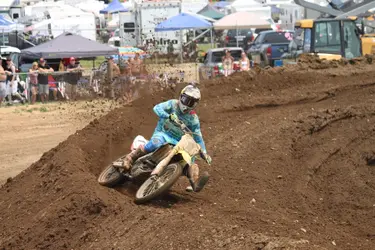rbbecker
TPF Noob!
- Joined
- Jul 18, 2016
- Messages
- 12
- Reaction score
- 3
- Can others edit my Photos
- Photos OK to edit
Hi All,
Looking for some help on action shots. I get lucky once in awhile on my shots but most the time it seems like I'm slightly off on my focus point. I switched to the center auto focus on my Rebel so I don't stray and focus on some outlier in the background. Any tips on what I can do to improve frequency of success on these types of shots? How does the lens play into it?
Camera: Canon EOS Rebel T1i
Lens: Canon EF-S 55-250mm F4-5.6 IS II
First Shot Settings (bad shot):
Aperture: f/7.1
Shutter: 1/200
ISO: ISO-100
Focal Length: 55mm
Second Shot Settings (good shot):
Aperture: f/6.3
Shutter: 1/320
ISO: ISO-100
Focal Length: 109 mm
Looking for some help on action shots. I get lucky once in awhile on my shots but most the time it seems like I'm slightly off on my focus point. I switched to the center auto focus on my Rebel so I don't stray and focus on some outlier in the background. Any tips on what I can do to improve frequency of success on these types of shots? How does the lens play into it?
Camera: Canon EOS Rebel T1i
Lens: Canon EF-S 55-250mm F4-5.6 IS II
First Shot Settings (bad shot):
Aperture: f/7.1
Shutter: 1/200
ISO: ISO-100
Focal Length: 55mm
Second Shot Settings (good shot):
Aperture: f/6.3
Shutter: 1/320
ISO: ISO-100
Focal Length: 109 mm
Attachments
Last edited:














